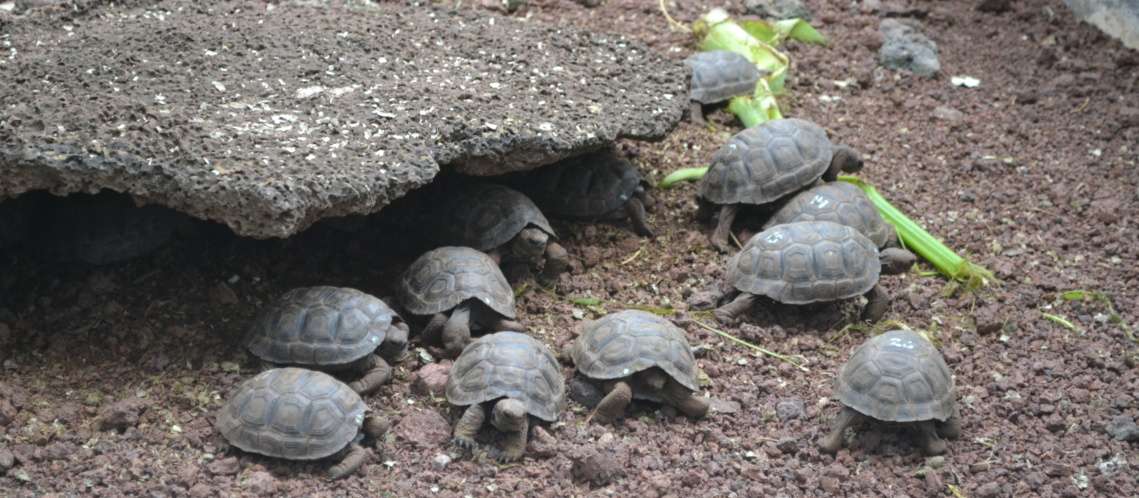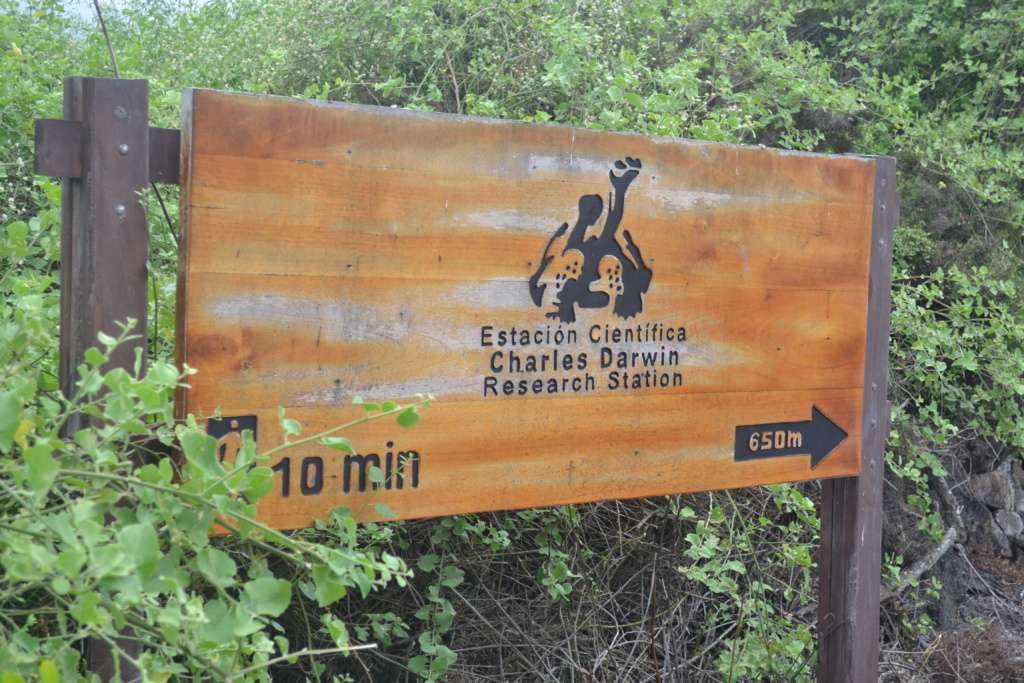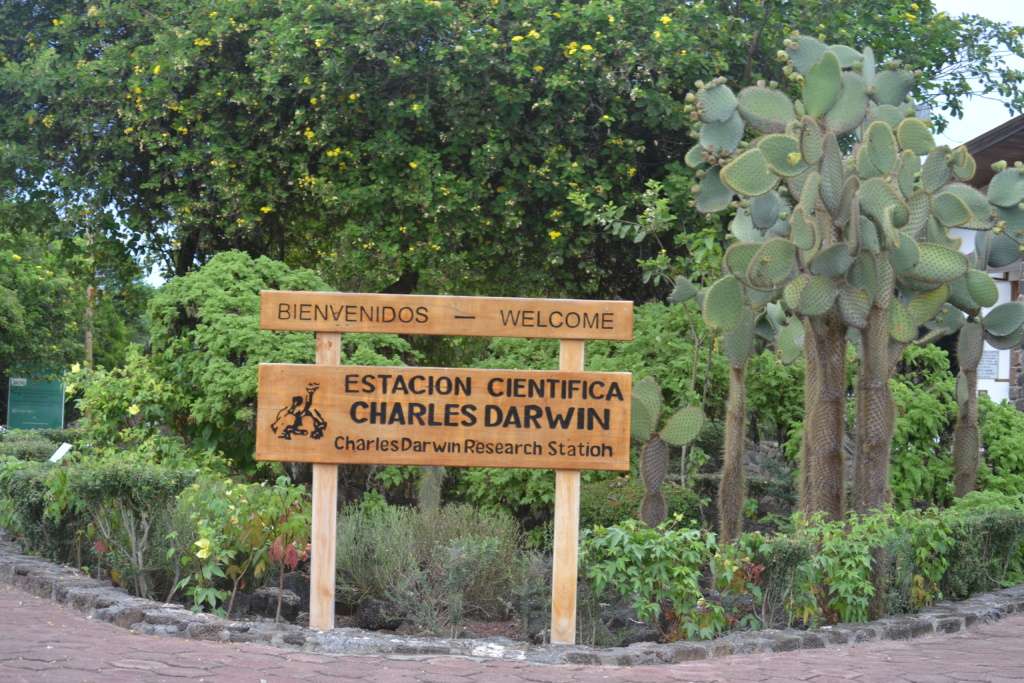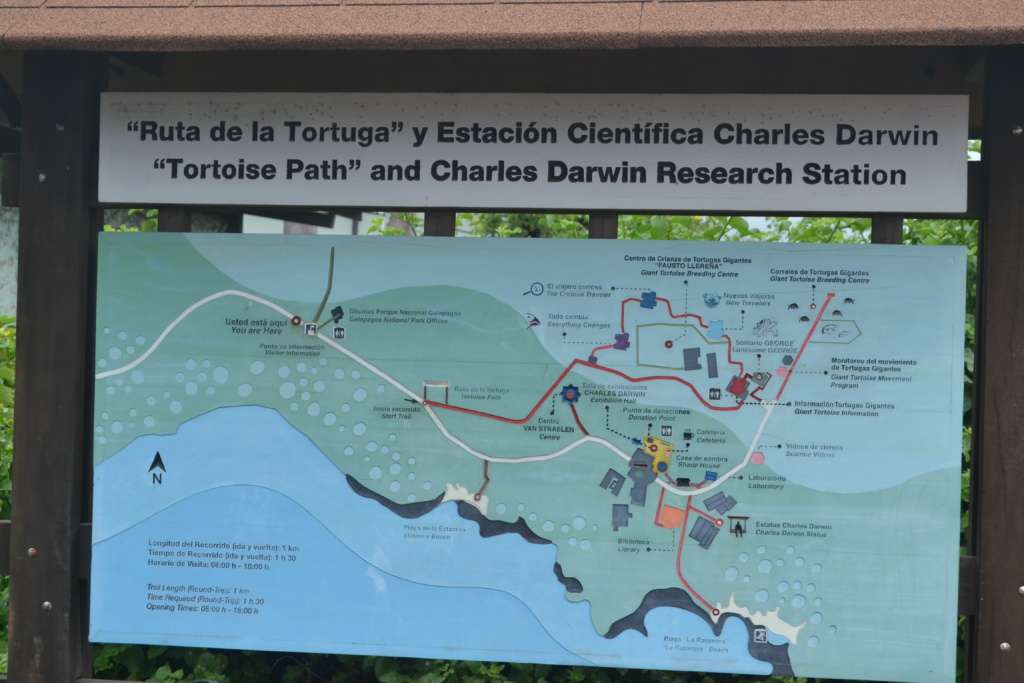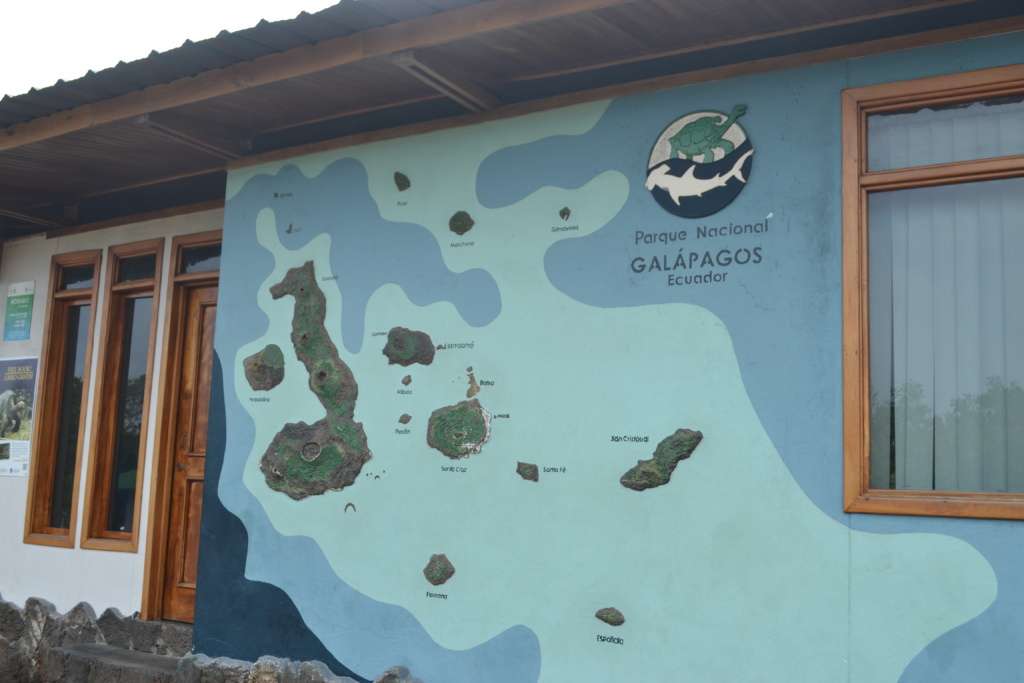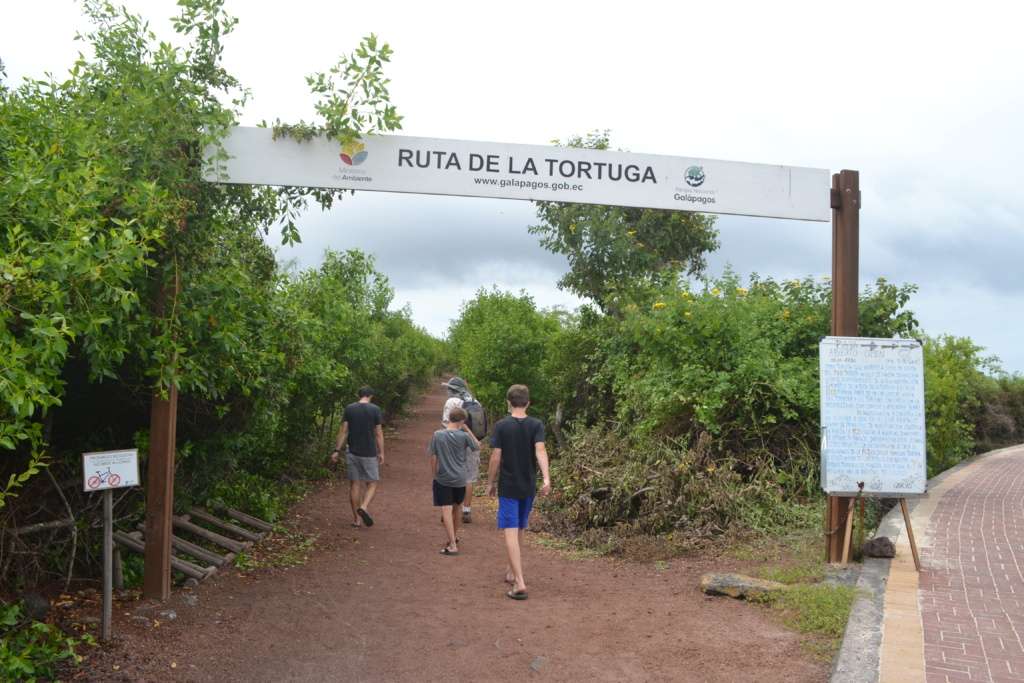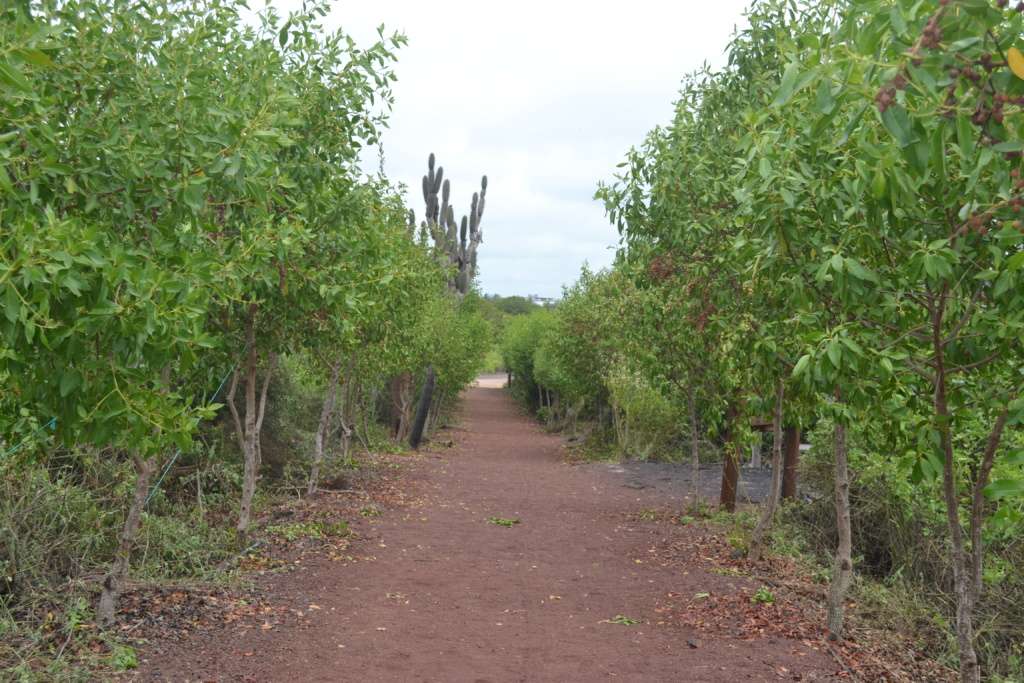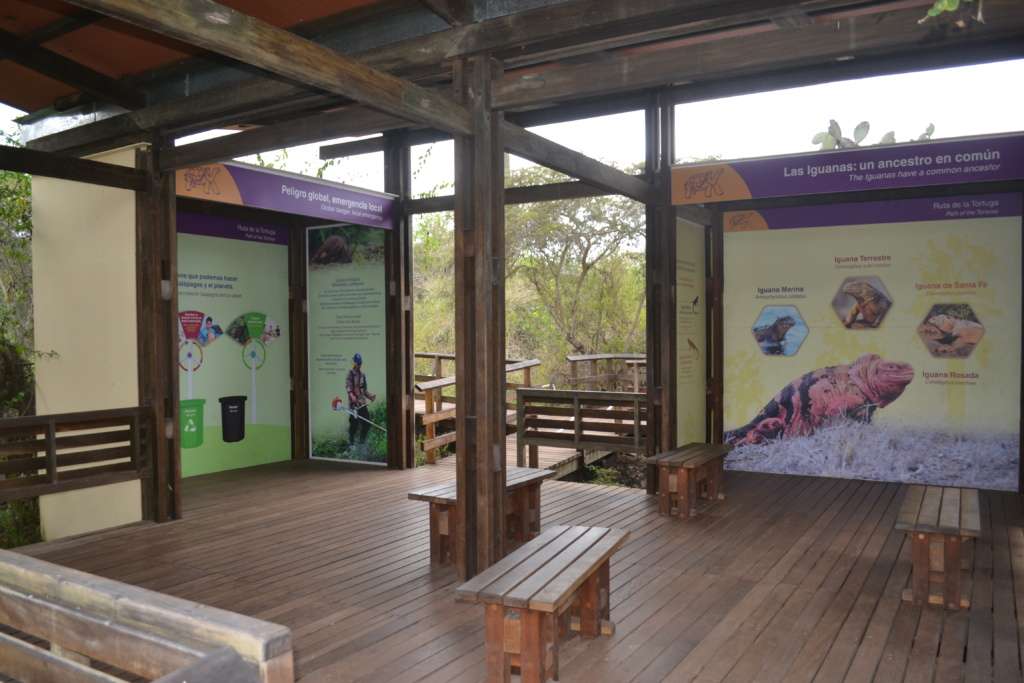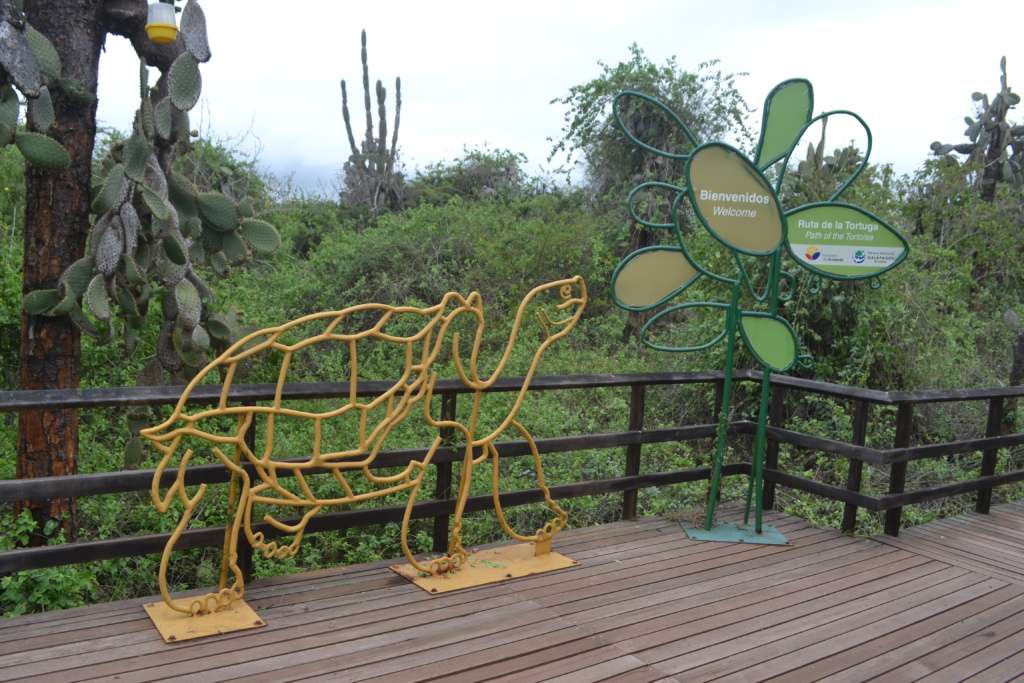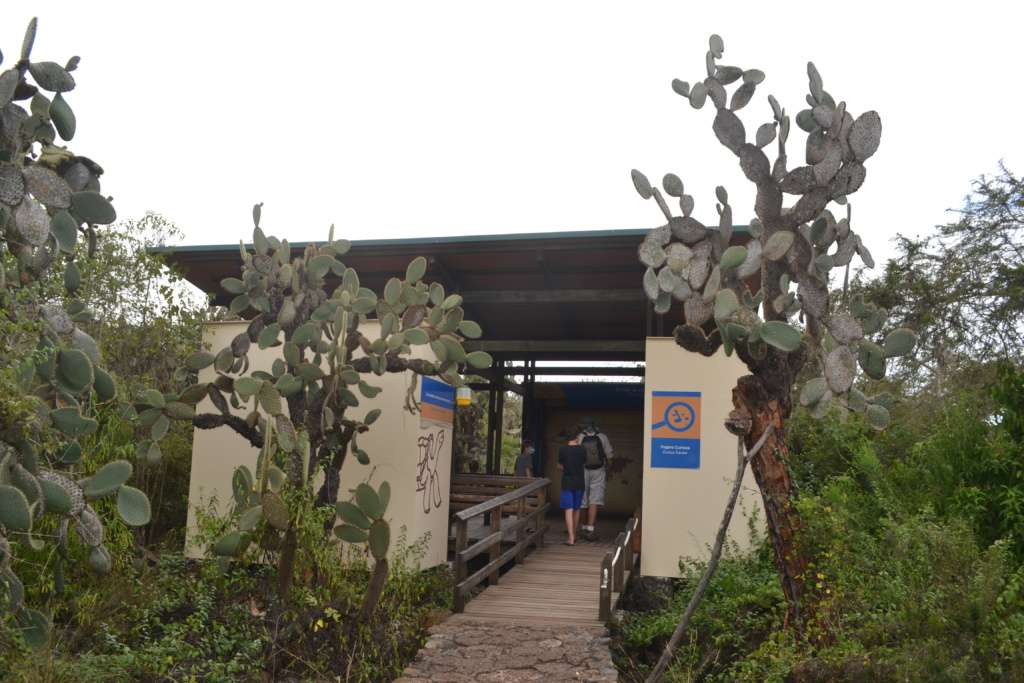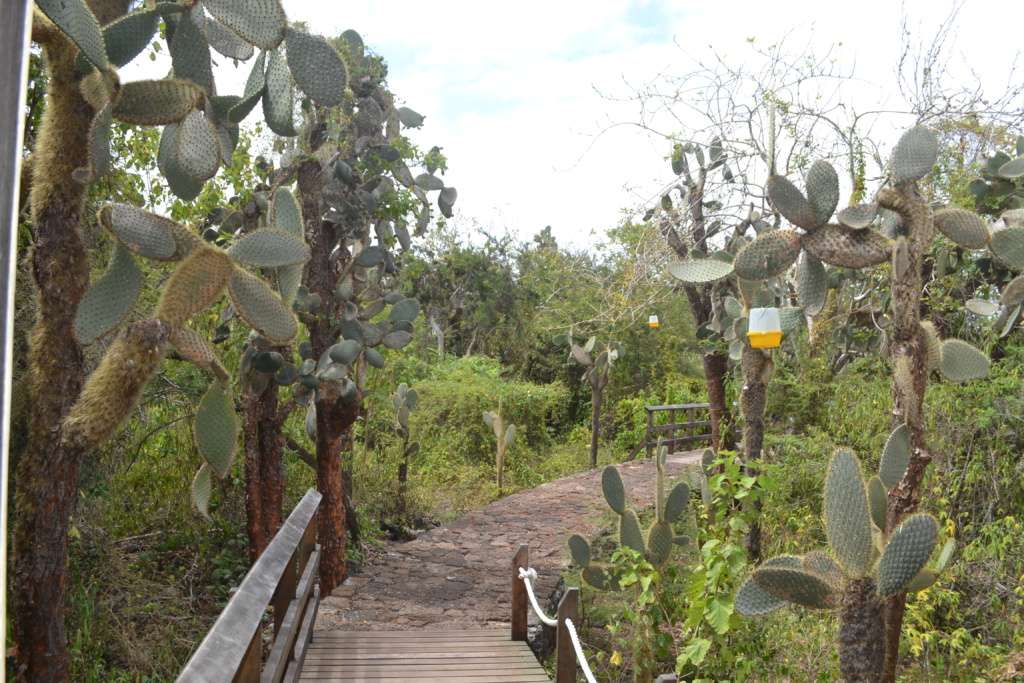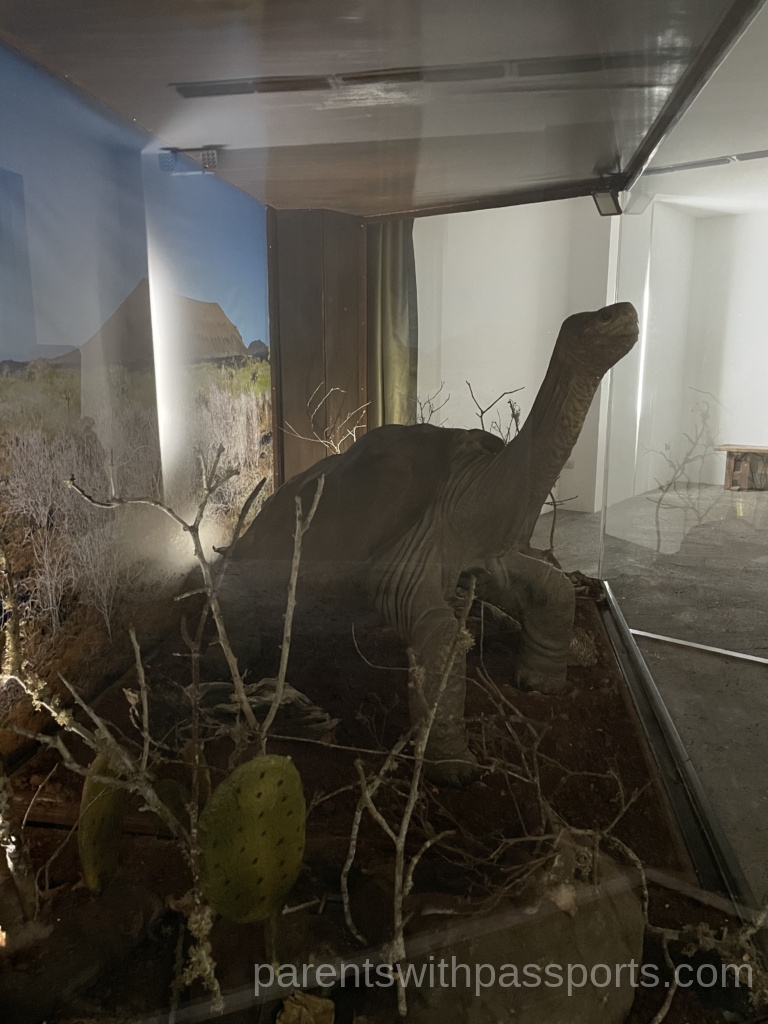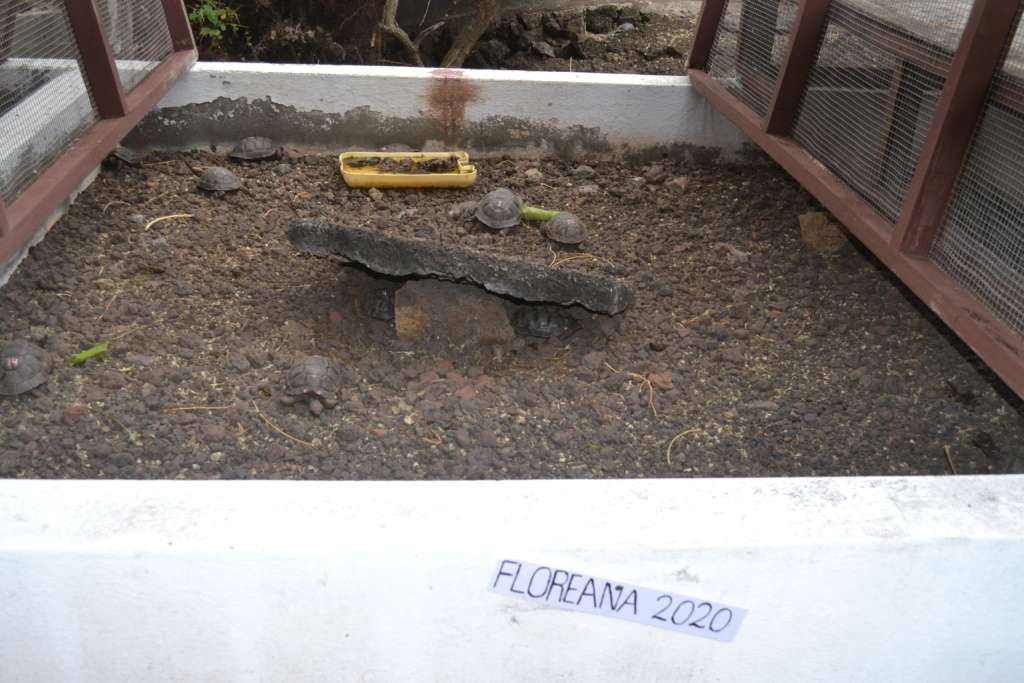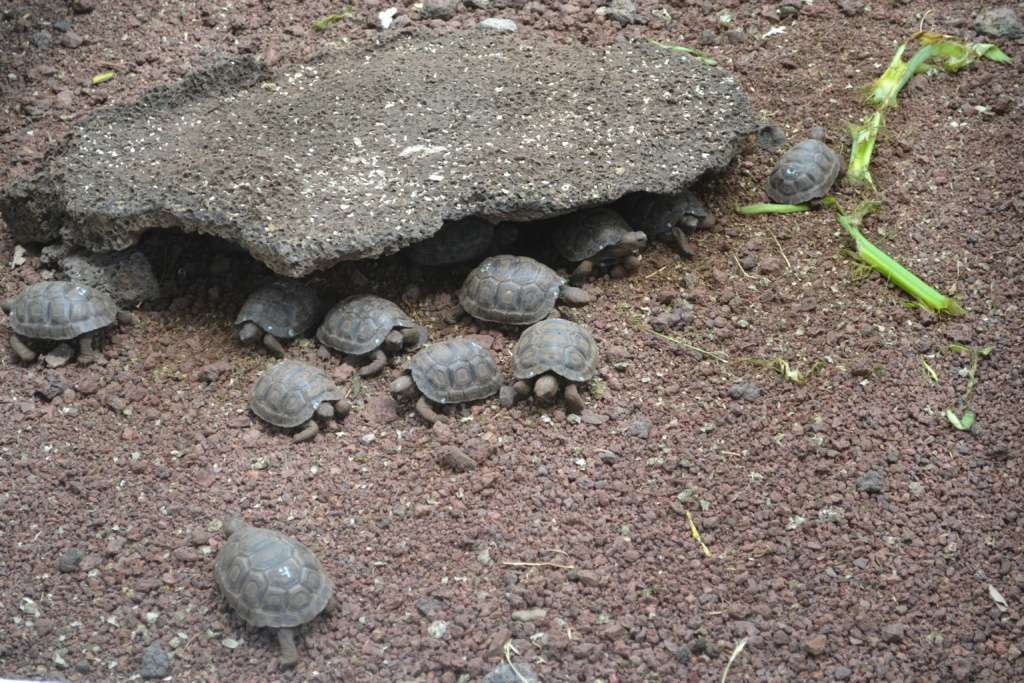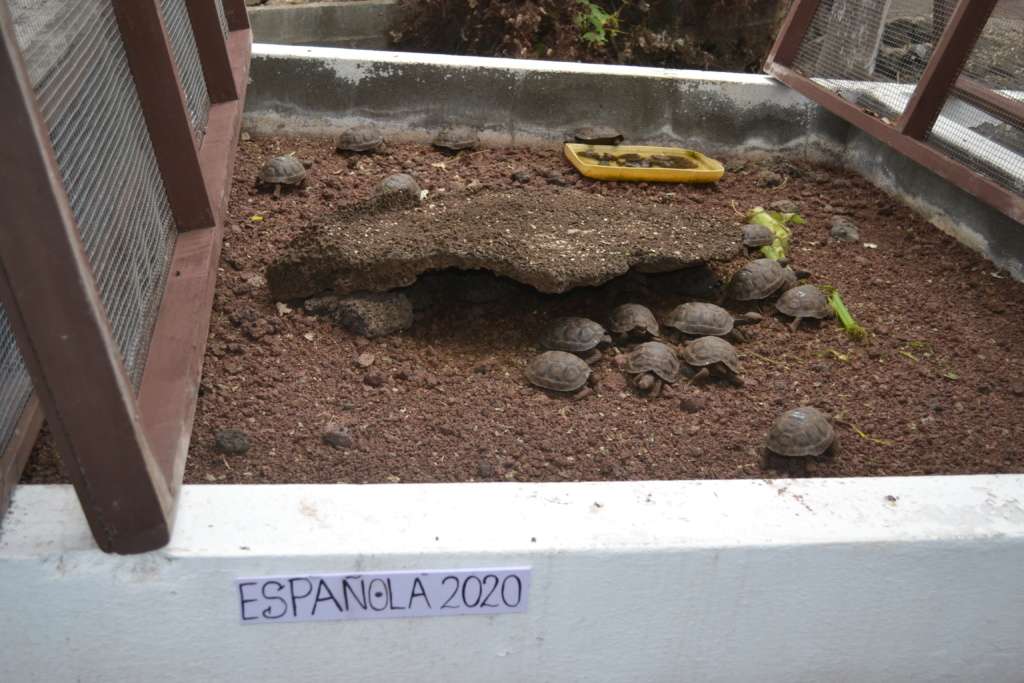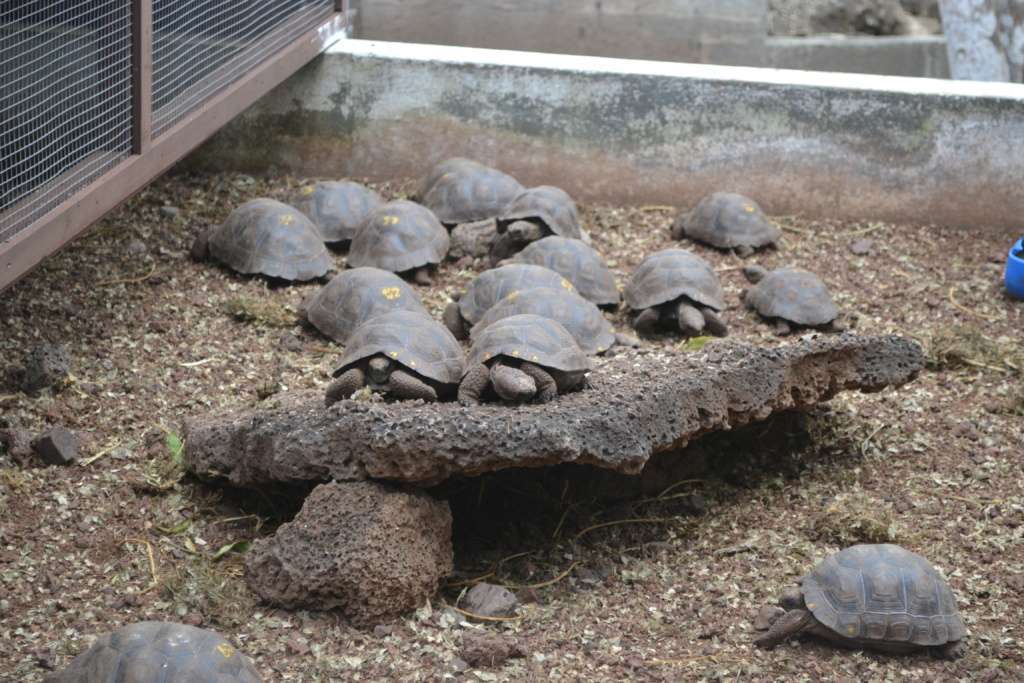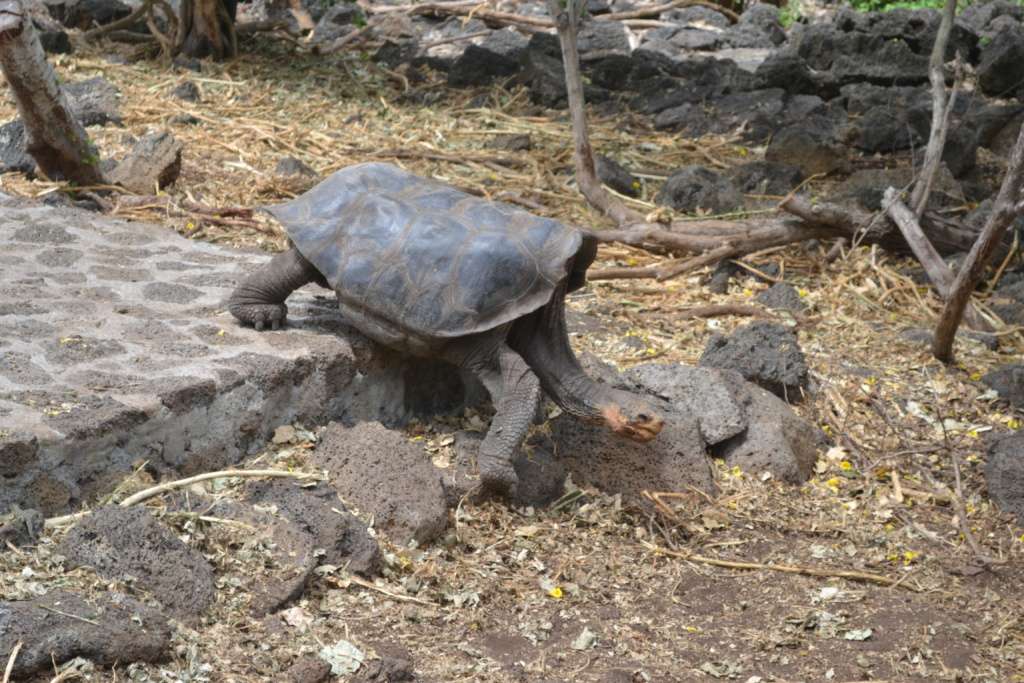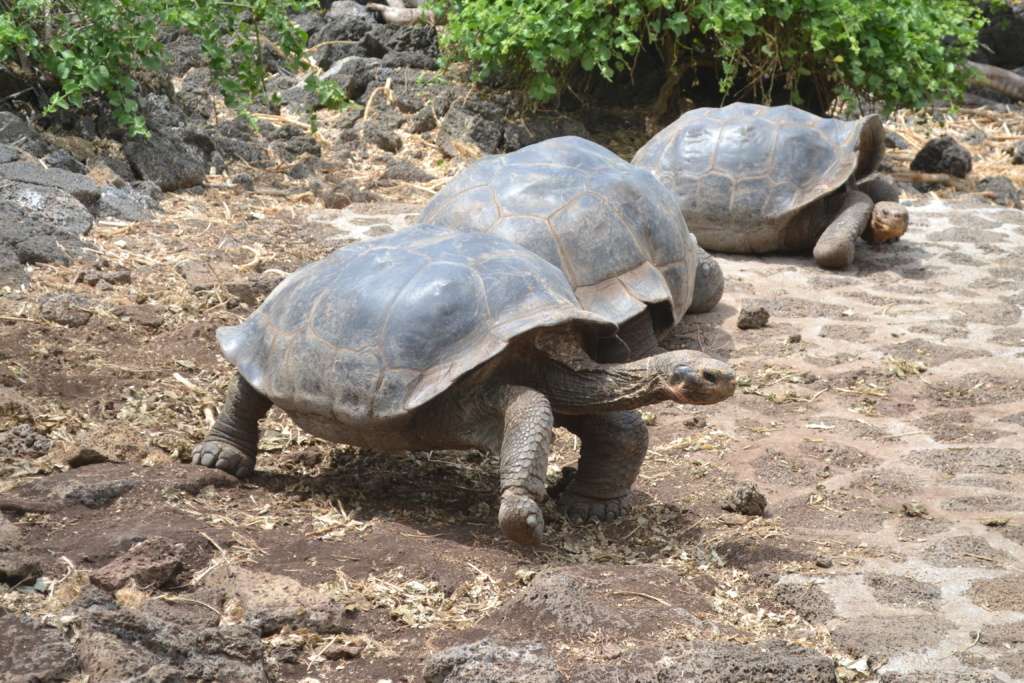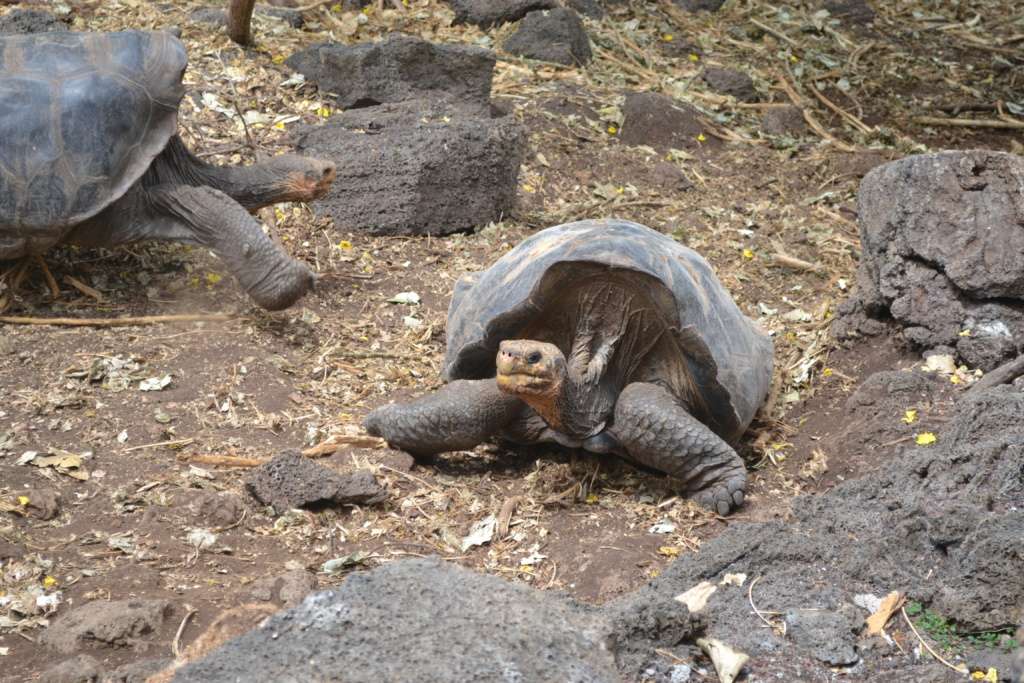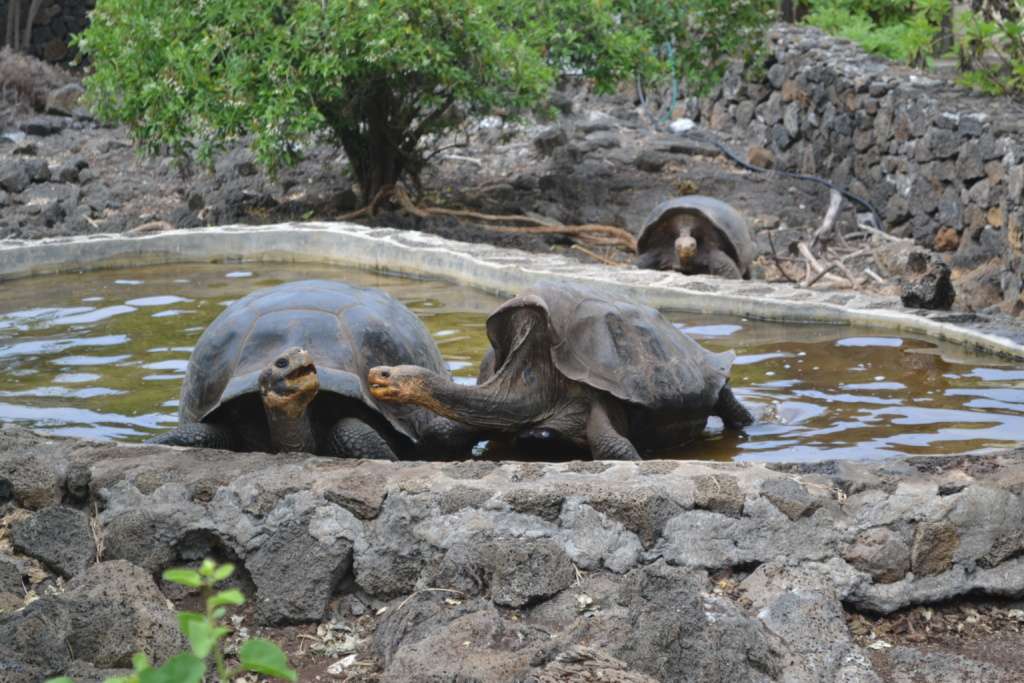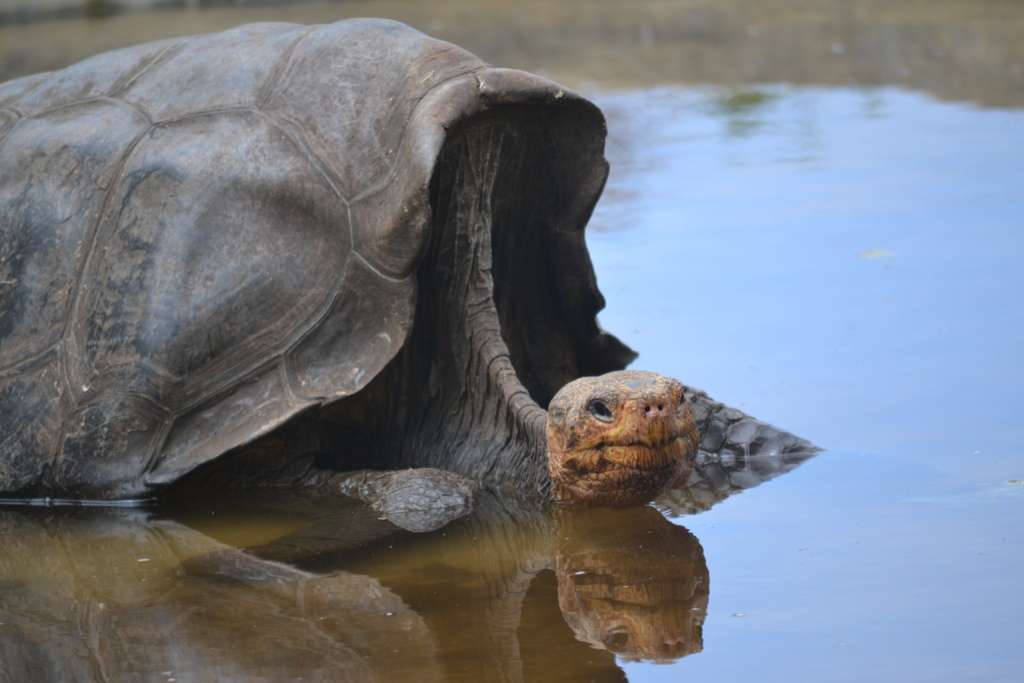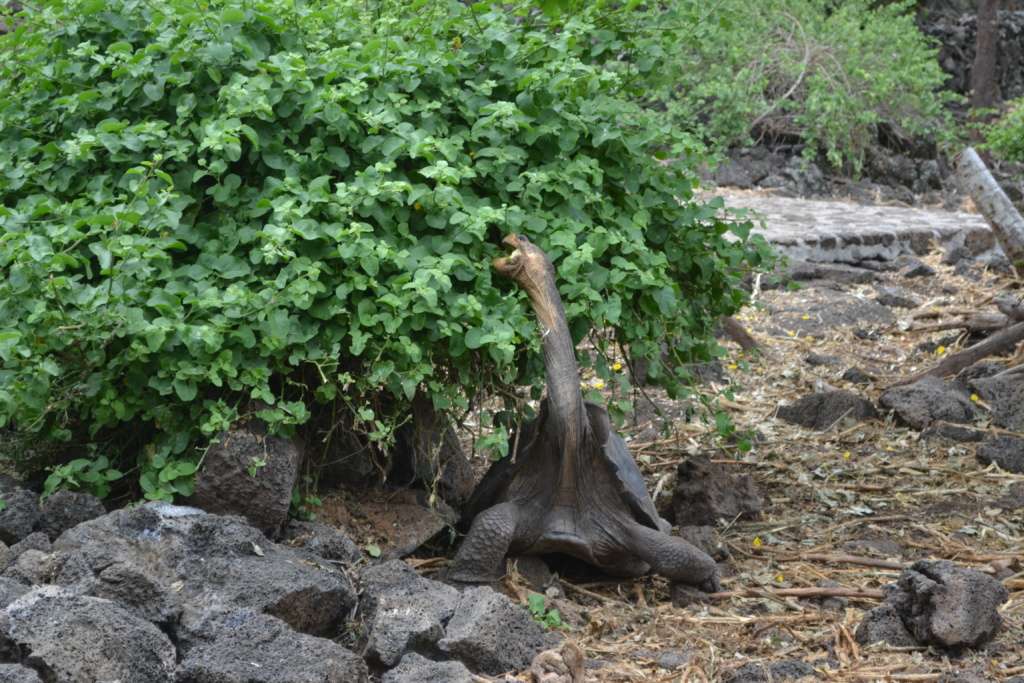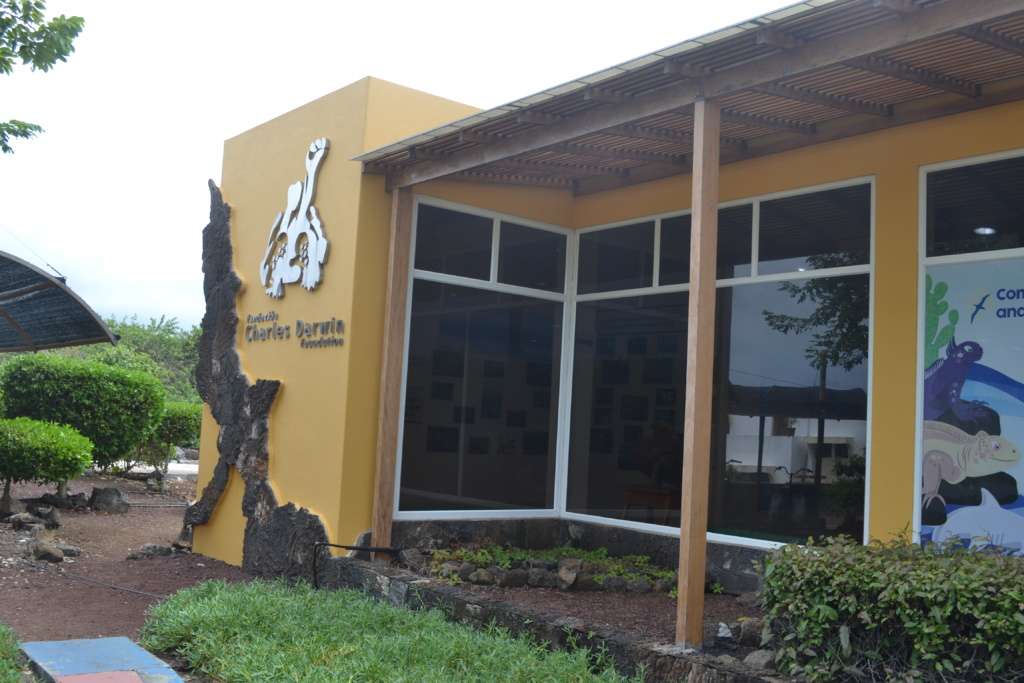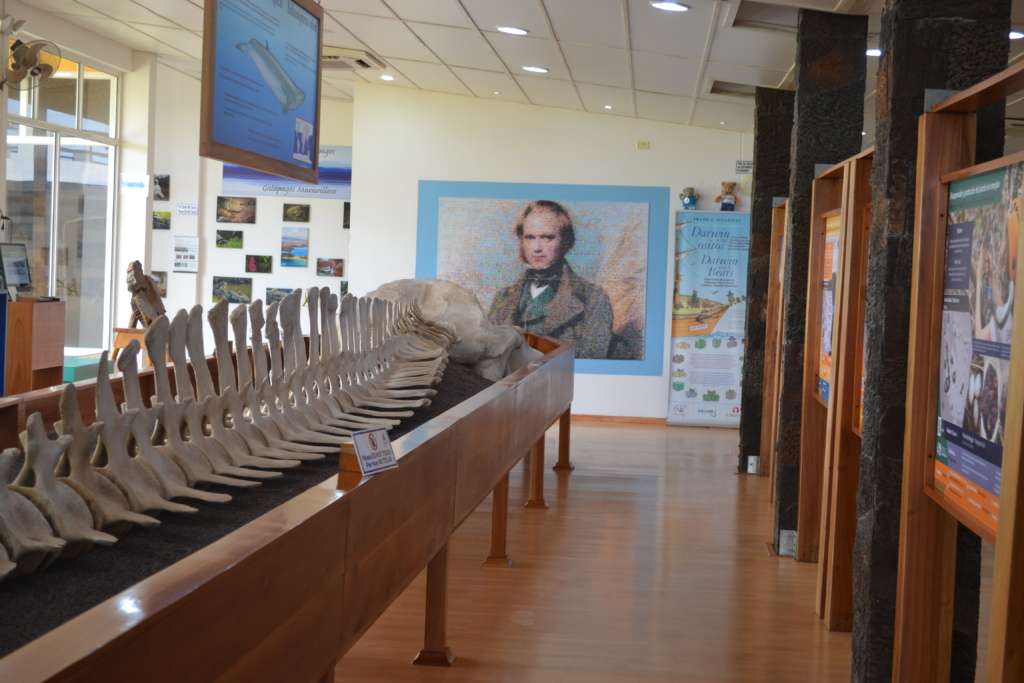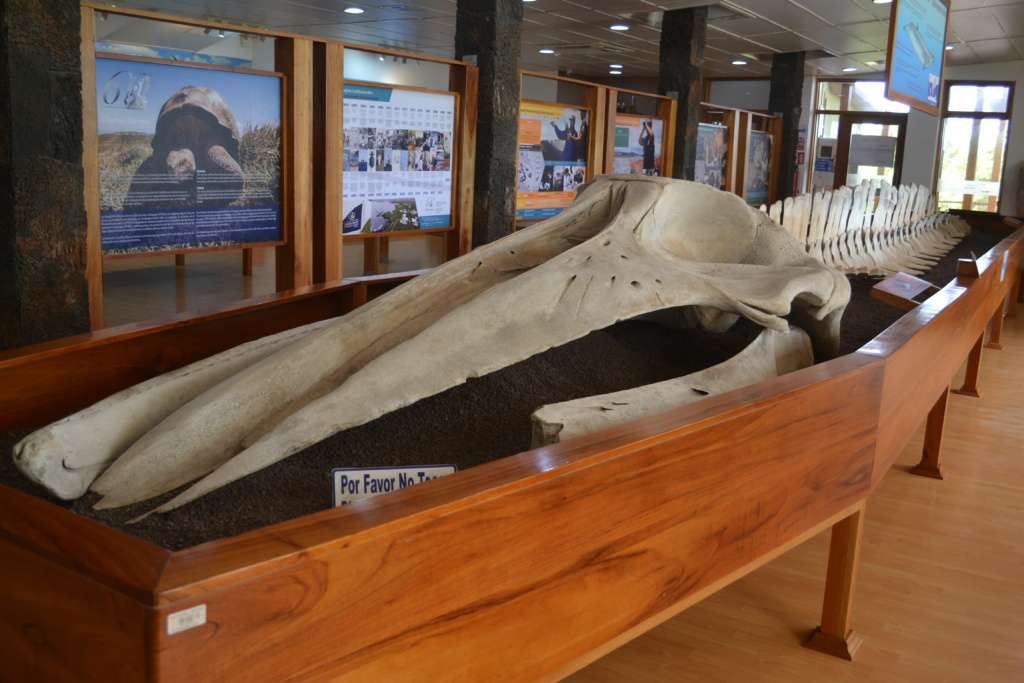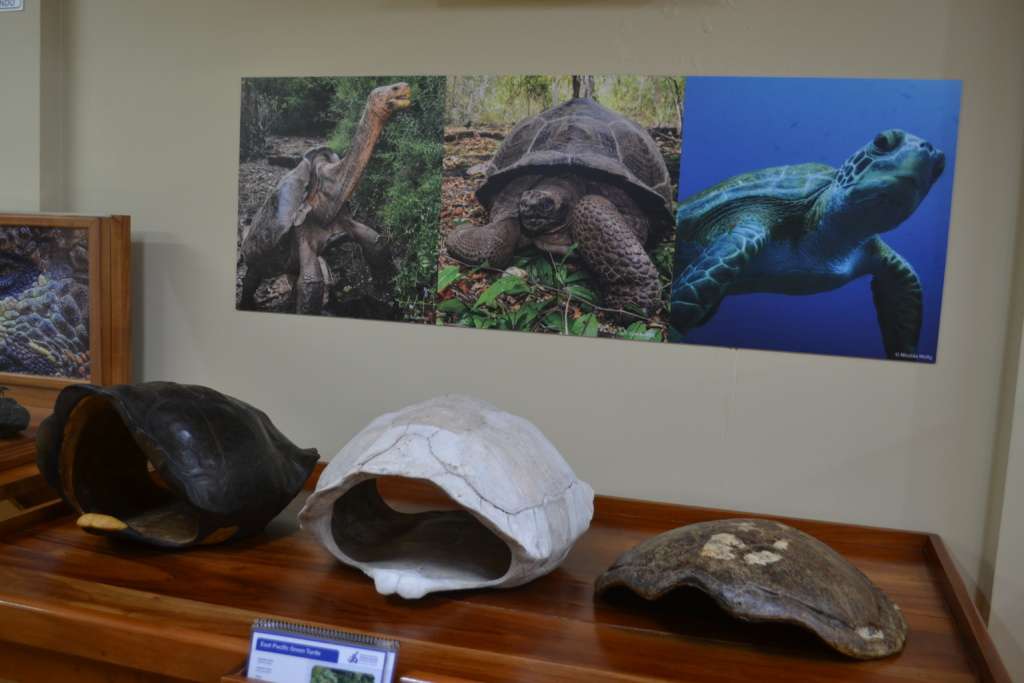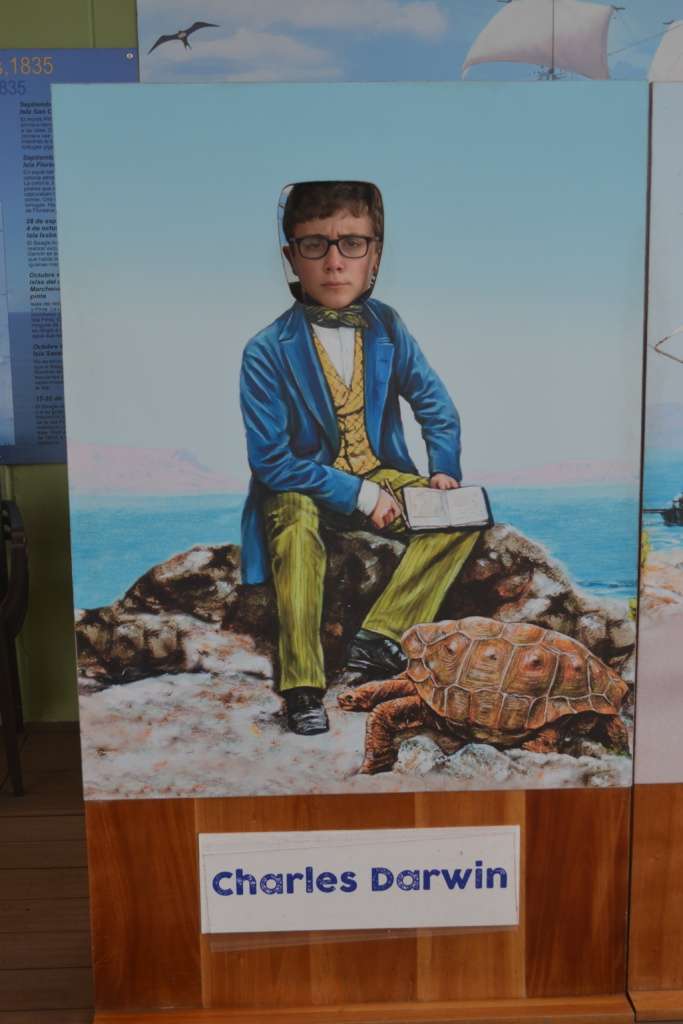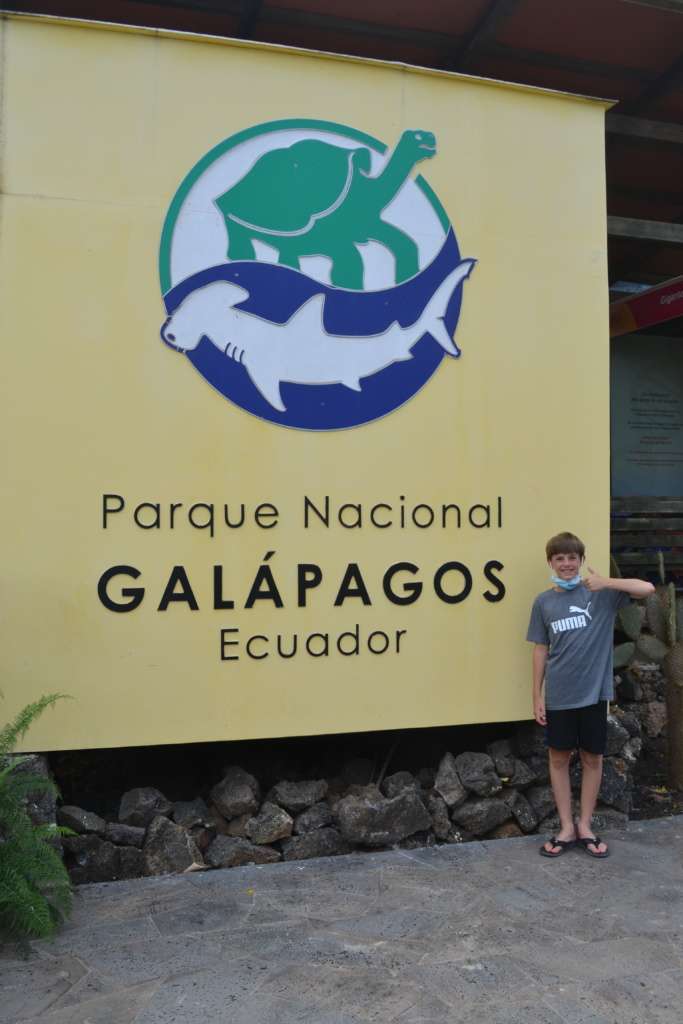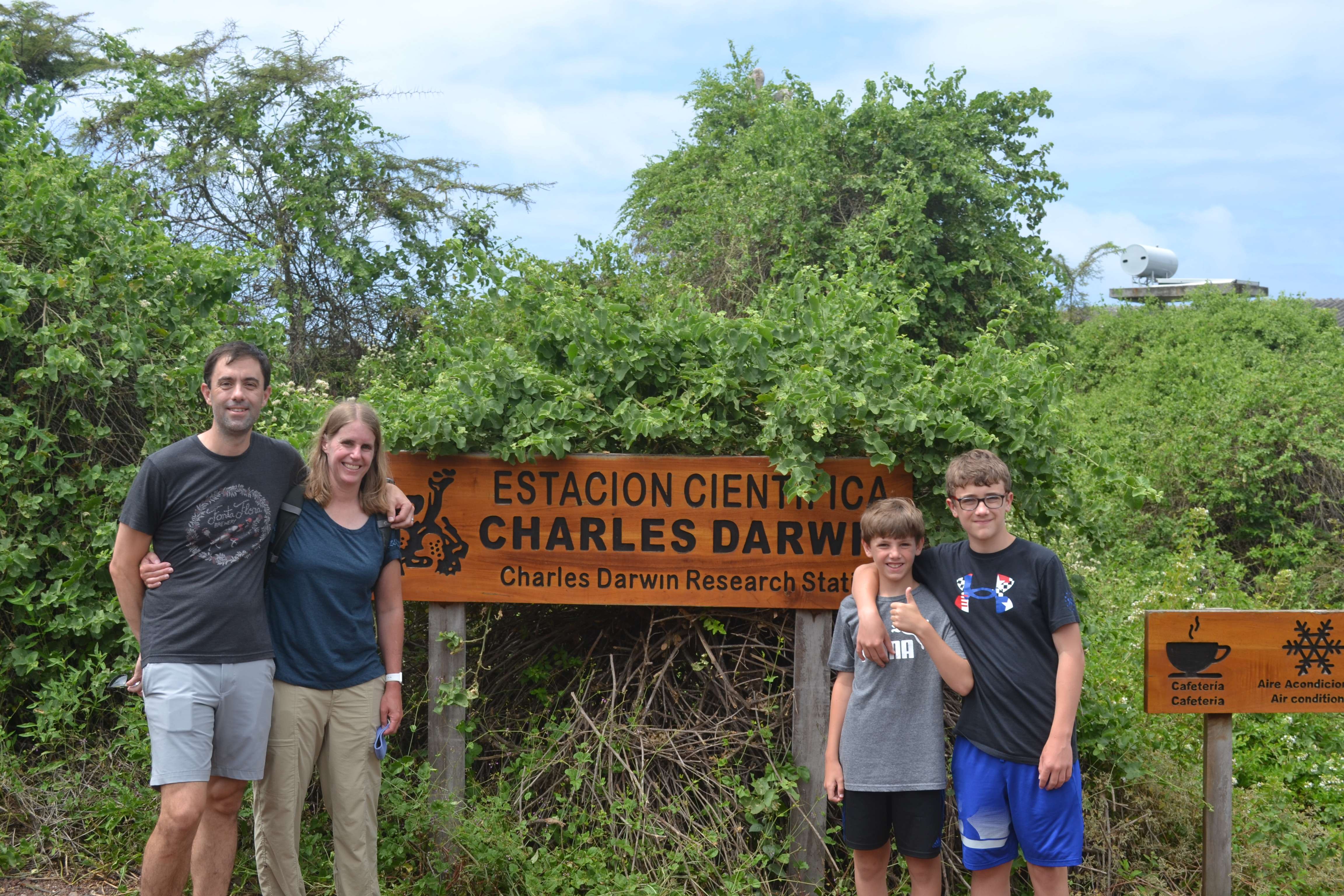We took the early morning ferry from Isabela to Santa Cruz and planned to spend the first day on Santa Cruz exploring the island on our own. Our first stop was the Charles Darwin Research Station.
It was a little longer walk from town than we expected, and the walk was made a little more stressful by the fact that we weren’t 100% sure we were going the right way. We hadn’t completely gotten our bearings in town yet but thankfully we were headed in the right direction and came to the Research Station after about 30 minutes.
The Charles Darwin Foundation is a non-profit dedicated to scientific research to promote the preservation of the unique environment and biodiversity of the Galapagos Islands. The Research Station is the operative branch of CDF and currently has over 20 active research projects, studying everything from the migration of different tortoise species to the incidence of bird mortality on Santa Cruz Highway.
I had read conflicting things about the need for a guide at the station. In normal times (i.e. pre-covid), they were not required and it was one of the few free activities on the islands. But before we left, several tourist sites were updated to state that it was no longer free and that admission was now $10 with a naturalist guide. When we arrived at the entrance to the Research Station, there was a tent set up with several employees providing information. A sign stated that guides were required so we paid our $40 and were assigned a guide. But while we were waiting to leave on the tour, another group of tourists approached the tent. They were given the same speech about guides and they just politely declined and went on their way into the Research Station on their own. So… I’m not sure what the official policy is. Everything seemed to point to guides being required but they clearly weren’t enforcing it when we were there.
In any event, we were assigned to a guide and headed into the Research Station. We started down the Ruta de la Tortuga (Path of the Tortoise), which has 4 educational centers along the desert landscape path: Everything Changes, The Curious Traveler, New Travelers, and Lonesome George.
The final exhibit room had the embalmed body of Lonesome George on display. Lonesome George was the last surviving tortoise of the species Chelonoidis abingdoni from Pinta Island. Prior to the early 1970s, the Pinta tortoises were thought to be extinct. But George was discovered on the island in 1971, and a year later he was brought to the Charles Darwin Research Station on Santa Cruz in an effort to protect him while trying to finding him a mate in order to save the species from extinction. Sadly, a mate was never found and when Lonesome George died in 2012 at over 100 years old, the Pinta Tortoise species was officially extinct.
Another major feature of the Charles Darwin Research Station is the Fausto Llerena Breeding Center. Galapagos tortoises have been threatened by introduced species such as rats, pigs, and dogs. In order to conserve these species, tortoise eggs from several different islands are brought to the breeding center and incubated artificially. They are born and raised in the center for the first five years of their life. At that point, they have a better chance of survival over their predators and they are released back into the wild on their original island.
The program has had great success, reintroducing over 2000 tortoises back into the wild. On Espanola Island, only 2 males and 12 females were remaining in the early 1970s. They were all brought to the breeding center and over the next several decades were able to repopulate their species. Over 1000 Espanola tortoises have been returned to the island in the years since then, and a simultaneous successful effort to eradicate goats on the island has allowed them to thrive back at home.
There are several pens in the breeding center, each marked with a Galapagos island and a year (for example, Espanola 2020 and Santiago 2019). The baby tortoises in the individual pens are marked with a colored number to further identify their home island and birth year. It was amazing to see so many baby tortoises in one place.
And it was fascinating to watch the young tortoises as well. We were mesmerized by their slow lumbering walk and cringed when we heard them scrape the bottom of their shell as they maneuvered down rock piles. And their necks were amazing! Seeing them stretch out to unbelievable heights to eat leaves off of a bush was an incredible experience.
After watching the tortoises for a long time, we completed the path and parted ways with our guide at the Charles Darwin Exhibition Hall. Opened in 2016, the hall features a small museum with photo displays, murals and local artists’ work, a natural history collection, and a full skeleton of a Bryde’s whale. The museum was small but well done and interesting. The boys especially enjoyed the skeleton and examples of different tortoise shells.
My youngest son and I headed back to get one last glimpse at the tortoises while my husband and oldest son relaxed and got a snack before our walk back. Overall this was a really educational and enjoyable visit. I will say, however, that I would have preferred to have visited without a guide. We may have just gotten a mediocre guide but I felt like he just told us all the exact things we were reading on the displays. He didn’t provide any additional information or insight and it would have been better if we could have just gone at our own pace and learned on our own. But we still enjoyed our visit and recognize the importance of financially supporting both the center and the guides after such a difficult year due to the pandemic.
